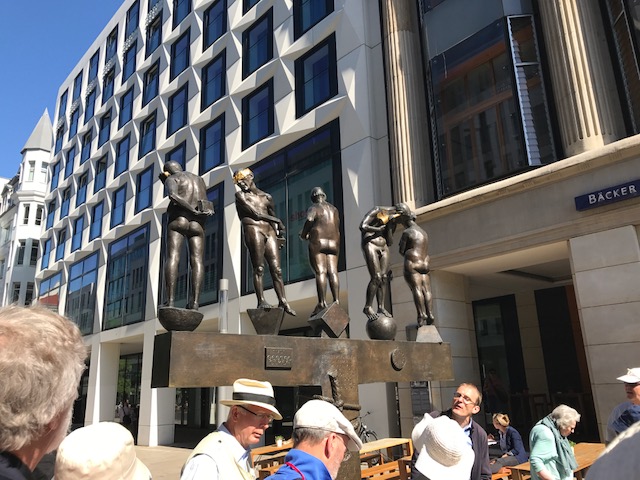Our latest correspondents are Zanna and Keith.
On Saturday night Mark informed us that the Dean would be leading a minute’s silence in Bedale Street by the Cathedral at 10.10pm, one week after the terrible events of the previous Saturday’s events. We were invited to join them in the silence (at 11.10pm local time) as a mark of support and solidarity; a further opportunity to reflect and pray for those so tragically caught up in that atrocity, hose in the wrong place at the wrong time.
Accidents of time and place: Luther was perhaps the right man in the right place at the right time. A professor at Wittenburg, the top university of its time, a time of bubbling concerns about elements of the established church, disparate strands of concern found their focus in a man who had the ability and character to argue them through fearlessly and steadfastly and with the protection, despite a very different theological perspective, of Frederick the Wise. In addition, it was a time of advancements in printing, which allowed widespread dissemination of Luther’s work.
Today, on the continuation of our tour of Leipzig, we could draw more ‘time and place’ parallels in the centuries later context of the aftermath of the Second World War.
As we drove into Leipzig centre, Silvio explained with compelling passion and knowledge about living through the last years of the GDR regime and the way the 1989 revolution bubbled up. Our walking tour started in Augustus Square, the Gewandhaus at one end and the Opera at the other. Both buildings rebuilt under the Stazi regieme following devastating bombing in WWII. The old monastery, latterly the university church of St Paul, consecrated in 1240, survived the war but was blown up by the GDR. The modern (2009) university buildings at the site have an echo of the old church’s east end with the replacement university church inside.

Nearby is a modern and controversial sculpture parodying five elements of life under the Stazi regime depicting five people perverting the professions in the interest of the state.

Silvio showed us photos showing how run-down Leipzig had become under communist rule; it was easy to appreciate how, for the patriotic citizens of a once beautiful city of culture, this was part of the ‘touch paper’ which led to the October 1989 uprising, centring on St Nicholas’ Church.
A students’ service had been held every Sunday following the destruction of the University church. This led on to the Peace movement, started in 1982 as a result of short-range nuclear missiles being stationed nearby. The Pastor initiated Peace Prayer Services. Numbers increasing throughout the 1980s – they became a lawful expression of unrest. At the same time, although movement from East to West Germany was a difficult and daunting business, East Germans were able, through TV media and other means, to see a very different way of life in the West. This culminated in the peaceful protest of 9th October 1989 when 70,000 people walked around the city centre from St Nicholas’ Church carry candles whilst singing and praying. Four weeks later the wall came down – this was the People’s Revolution. The key message is that the Stazi were ready for violence but did not know how to handle mass peaceful protest.
Leipzig is a beautiful city, full of historic, cultural and artistic connections, which we were only able to sample in small part, and which was to play an important part in the major global political changes at the end of the 20th Century.

After an afternoon’s drive to Regensberg, we celebrated the Eucharist in Neufarrkirche. This church was built on the sie and using stones from a demolished Jewish Synagogue in the middle ages. A larger church was planned but the rest was not built. As Luther’s influence spread this church owned by the civic authorities was turned into the first Lutheran church in the now Protestant city.

You must be logged in to post a comment.